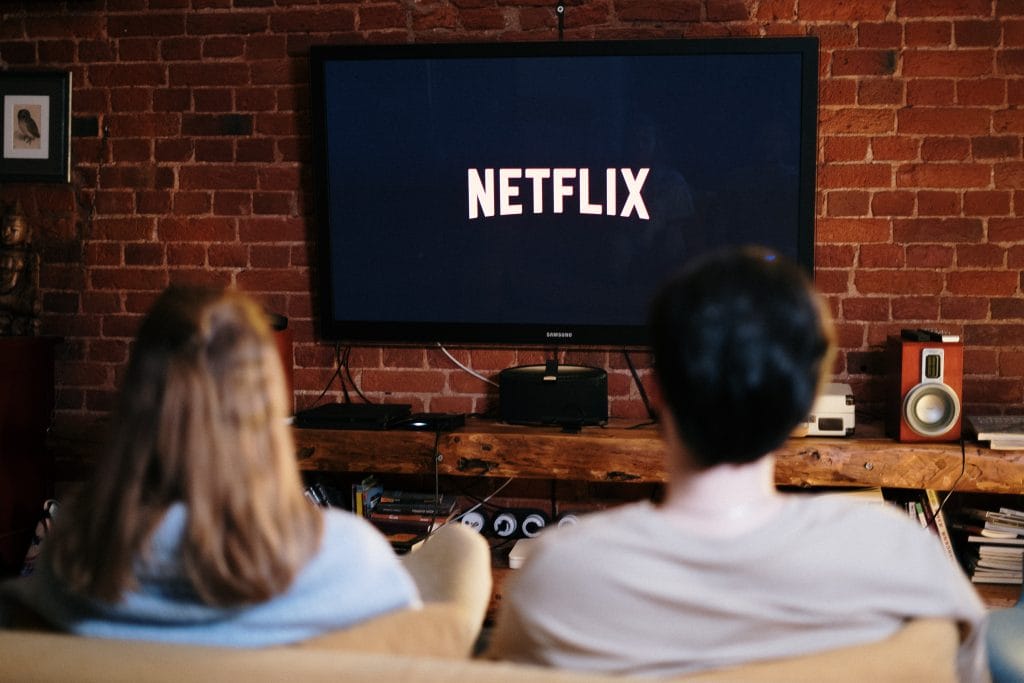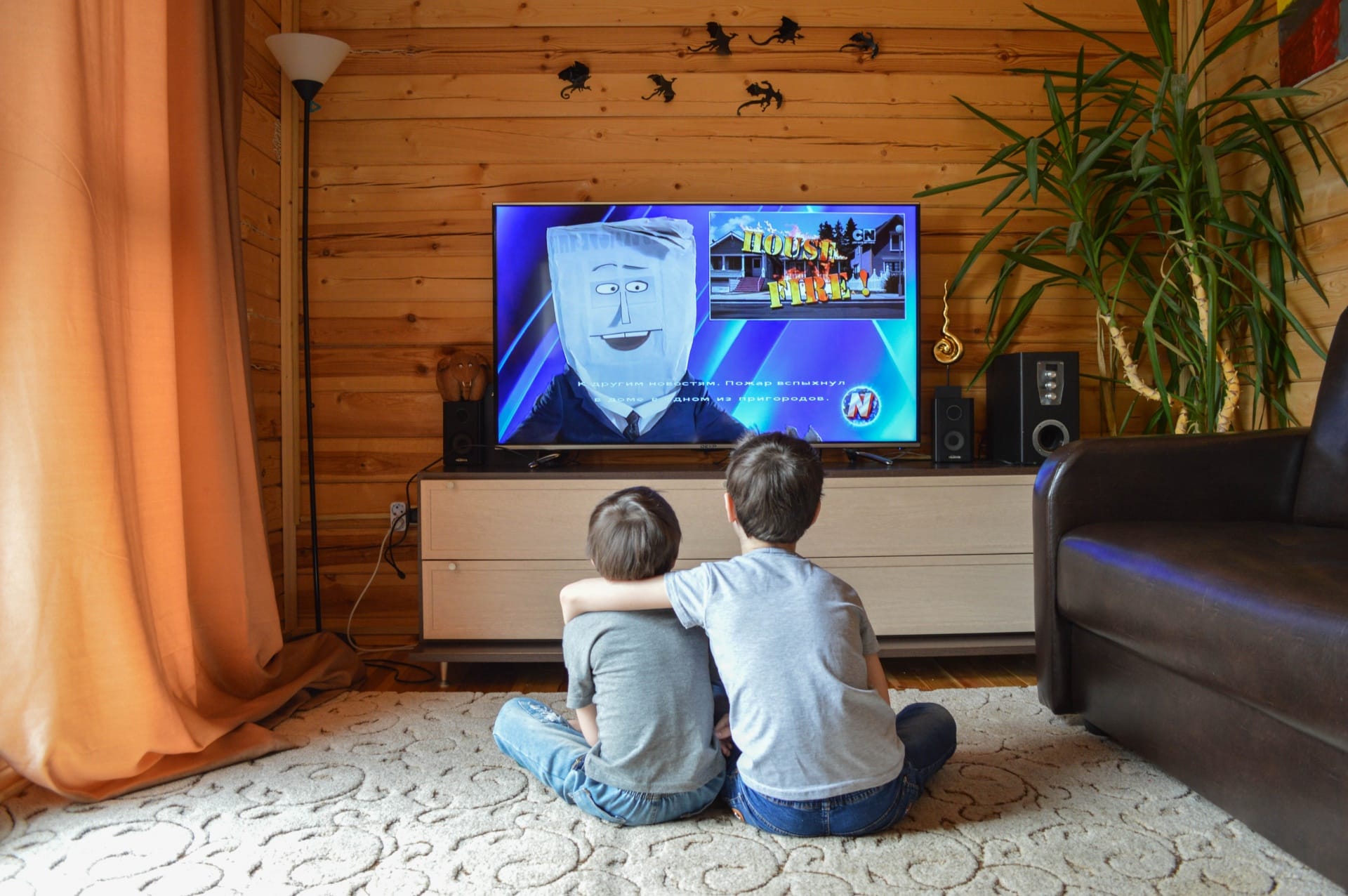There is a common belief that you should not watch TV from too close a distance, as this can lead to numerous health problems. We decided to check whether there is a scientifically proven distance from which it is safe to watch TV.
The fact that you shouldn’t watch TV at close range is written in Media And blogs. Large shops technology They provide on their websites a method for calculating the harmless distance from the screen to the eyes: for FullHD, the distance should be three vertical screen sizes, for 4K - 1.5 of this size. You can also find calculations, based on screen diagonal. According to them, this figure needs to be multiplied by 2.5, and this will indicate at what distance the TV will not cause harm to health. There are also recommendations in absolute terms - no less 2 m, no less 3 m and even 5 m. Rospotrebnadzor believes a safe distance from the TV for children is at least 3 m; the agency also notes that watching TV harms children’s vision.
Most likely, the idea of a certain safe distance from the screen was born in the days of televisions with kinescopes — electron beam devices that convert electrical signals into light. Such devices could really emit X-ray radiation is harmful to health, primarily to vision. In particular, the American company General Electric in the 1960s released televisions with radiation levels 100,000 times higher than those recommended by health experts. Having found out this, the company quickly recalled the dangerous models, but the idea became stronger in society that televisions were unsafe and it was better to stay away from them. Models made after 1968, no x-rays don't emit, however, there is caution in society about them too. Ophthalmologist Norman Safra of Maimonides Medical Center in Brooklyn speaks: “The distance required for health from the TV is not an old wives’ horror story, but outdated technology. In our grandmothers’ world, not sitting close to the TV was a reasonable recommendation, but it is now outdated.”
It is also believed that blue light from the screen negatively affects vision, so it is better not only to sit further away from the device, but also to wear special glasses while watching TV. glasses, blocking the blue colors of the spectrum.
Many scientists are wary of blue light because of its prolonged exposure before bedtime. worsens quality of rest due to the fact that it interferes with the production of melatonin. However, firstly, not all scientists agree with this: some experimental data shows that it is not blue light, but yellow light that disrupts the sleep-wake cycle more strongly (at least in experimental mice). Secondly, the blue spectrum is absolutely necessary - it is responsible for a number of important visual functions, including the color perception of objects and determining their contrast.
Experts from the American Academy of Ophthalmology They say, that to date there is no scientific evidence confirming that blue light from electronic devices, including television, is harmful to vision. They also note that a person receives the most blue light in the form of sunlight, and not from the backlight of a TV, computer or smartphone screen. The International Commission on Illumination reports that of all sources of blue light, only two have proven harmful to vision: the sun and welding. Reports that the color blue increases risk age-related macular degeneration (the most common cause of irreversible vision loss among older adults) the panel's experts call "speculative and not supported by peer-reviewed literature." Thus, blue light from electronic devices may prevent you from falling asleep on time, but not cause damage to your vision.
In 2015, scientists from Ohio University let down results of a 20-year follow-up that included 4,512 children aged 6 to 11 years at the start of the study. They concluded that television viewing habits do not influence the development of myopia. Debra Ronca, author of How Stuff Works, assumes: seeing how the child sits close to the screen, some parents literally put the cart before the horse, that is, they consider the distance to the screen to be the reason for the decrease in vision, while the child chooses such a distance because he already sees blurredly, which means he should be shown to an ophthalmologist. At the same time, M.D. Lee Dufner notesthat children are better than adults at focusing on close objects. Therefore, a child can hold a book much closer to his face or sit at a shorter distance from the TV than an adult. Dufner also says that sitting directly in front of the TV does not impair the vision of either children or adults - he calls this idea a myth.

Unlike distance from the screen, time spent watching TV can have a negative impact on health. Canadian scientists for seven and a half years observed on 1,314 children, tracking their TV viewing habits and various aspects of health. The children were examined for the first time at two and a half years, then at four and a half and ten years. The scientists noted that the average television viewing time for two-and-a-half-year-olds was 8.8 hours per week. Those children who watched TV for just an hour more at this age were so different from their peers at the age of ten:
— were 7% less active in school activities;
— spent 10% more time playing computer games;
- consumed 9% more sugary soda and 10% more unhealthy snacks;
— 10% more likely to become the object of child bullying;
- were 5% more likely to gain excess weight.
With each additional hour of screen time during childhood, the negative consequences increased. So, if at two and a half years old a child spent not 8.8, but 11.8 hours watching TV (three hours more), then at ten years old he consumed almost 30% more unhealthy food and drinks than his peers, and his overall physical condition index was 27% worse.
Scientists from the University of Glasgow noted Another pattern: children who, at the age of three and a half years, watched TV more than two hours a day, at the age of 11 are diagnosed with bronchial asthma twice as often as their peers who spent less time on cartoons as children.
There is a negative relationship between TV viewing time and health for adults as well. Scientists from the University of Regensburg (Germany) calculatedThat every two hours spent in front of a screen every day increases the risk of colorectal cancer by 8%, as well as the risk of endometrial cancer (the inner lining of the uterus) by 10% in women. However, the provoking factor is not harmful radiation, as one might assume, but a sitting position.
Thus, according to scientific data, there is no minimum safe distance from the TV screen to the eyes. If you have to literally lean into it to clearly perceive the picture on the screen, this is a reason to visit an ophthalmologist, as this may indicate vision problems. What is much more important for health is not how far to sit from the TV, but how much time a day to watch it. After all, there is a lot of evidence that sitting in front of a screen for too long leads to problems in both children and adults.
Cover image: Public Domain Pictures.net

Not true
Read on the topic:
- Is it true that reading from a screen damages your eyesight?
- Is it true that reading while lying down is harmful to your eyesight?
If you find a spelling or grammatical error, please let us know by highlighting the error text and clicking Ctrl+Enter.






